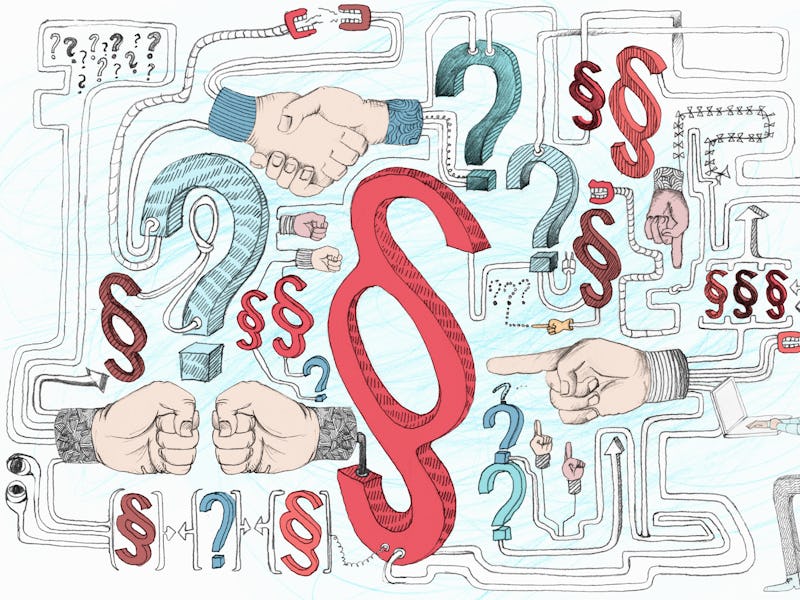The three feelings that mean you need to learn how to say “no”
Three therapists give Inverse advice on how to establish boundaries.

So there’s a chance you can start doing things again.
Over 100 million Americans are fully vaccinated, representing about 40 percent of adults. President Joe Biden’s goal is for 70 percent of American adults to be vaccinated by July 4. The Centers for Disease Control and Prevention (CDC) now say if you’re fully vaccinated you don’t need to wear a mask in most settings, indoors and outdoors. You can hang out with your fully vaccinated friends. It’s all very exciting. Right?
Technically, sure! But there’s also pause, for some, about re-entering the social brouhaha. You’re going to be asked to do things again — things you may not want to do. And you’re going to have to relearn how to say no.
Saying no when you realize it is the best choice for your health and wellness is, in the world of therapy, also a way of establishing personal boundaries. And learning how to set boundaries is one of the best things you can do, experts tell Inverse. In this article, three therapists give guidance on:
- The first step to take when you want to establish boundaries.
- What to do if you feel guilty about telling friends or family “no.”
- The best way to tell someone “no” without hurting their feelings.
But first, a bonus question: Is learning how to say no generally a healthy thing?
The answer is a resounding yes.
“It’s essential to healthy and happy relationships and for our lives in general,” says Dana Gionta, an organizational psychologist and consultant. “If we do not learn how to say no, we will over time become overwhelmed, stressed, resentful, and feel like we’re not living our own lives.”
“Learning how to say ‘no’ is one of the healthiest habits we can implement into our lives to prevent burnout, anger, and resentment,” says Jennie Marie Battistin, a licensed marriage and family therapist. “When we learn to say ‘no’ we have the time to say ‘yes’ to the things that really matter.”
“‘No’ is powerful and empowering,” says Jenn Kennedy, also a licensed marriage and family therapist. “It also helps others know they can trust your yes. You show up for the things you want.”
What’s the first step to take when you want to establish boundaries?
The first thing you need to do, Kennedy says, is be clear about what you want and/or need. “If you have a tendency to want to please others, this can get muddy,” she says.
This is why it’s so important to value yourself and your time, Battistin says. That’s key for knowing what behaviors you’re willing to tolerate and what time commitments you can give. She says common ways of setting boundaries include:
- Letting someone know they hurt you.
- Sharing something that was embarrassing to you.
- Giving a timeframe in which you’ll thoughtfully consider saying yes or no to a request.
- Identifying an unacceptable behavior in an effort to avoid becoming angry or resentful toward that person.
Ultimately, you need to know your limits and what feelings signal to you that a boundary likely needs to be set. Gionta says the three feelings that best signal this are:
- Discomfort
- Guilt
- Resentment
“When we begin to experience any of these, it’s a cue to ourselves to consider setting a boundary,” Gionta says.
What to do if you feel guilty about telling friends or family “no”?
Sometimes saying “no” can feel great — and other times you’re saying no to people who you really like. After a year of little socialization, how can you say no without coming off like a Scrooge?
“Boundary setting is simple but not easy,” Gionta acknowledges.
And how you say no makes a difference.
“If you are feeling a lot of guilt, you might deliver your ‘no’ with tension and it comes across as a shout instead of a neutral statement,” Kennedy says. “You are allowed to say no and that doesn’t mean you won’t ever see them or that you don’t like them. Rather, it can just be a ‘no, thank you.’”
Like most things, shooing off uncomfortable feelings like guilt or self-doubt can be helped by being thoughtful and respectful in how you establish the boundary.
“Realize boundaries are not mean or selfish,” Battistin says. “Boundaries are the ultimate self-care habit. Clearly identifying our boundaries helps form our identity as an individual.”
What is the best way to tell someone “no” without hurting their feelings?
An easy way to do this is by showing you are grateful for the invitation, Kennedy says. You can say thank you and let them know you’d like to see them another time. This works if you actually feel that way. Kennedy also advises you should “be honest so they don’t keep inviting you to things you will decline.”
“Realize boundaries are not mean or selfish.”
If you like hanging out one-on-one but hate parties, tell them. And next time, you can extend the invite.
You should be thoughtful and respectful. But — and here’s the real talk — you ultimately need to follow the mantra “you do you.”
“We can give ourselves permission to honor our own feelings and needs, and recognize we are not responsible for how others react to our boundary setting,” Gionta says.
“Sometimes people will feel hurt and disappointed when we set a boundary. That is ok. These are normal feelings to have when we don’t get what we wanted or hoped for.”
This article was originally published on